Common Embroidery Problems NOT related to Digitizing
One of the touchiest subjects a digitizer will confront is quality issues believed to be caused by poor digitizing that are in fact not related to digitizing at all. This is a touchy subject because a digitizer does not want to give the impression they are passing a problem to a customer. Qdigitizing is not immune to this but we never want to give the impression we don’t want to help you resolve a problem. The problem is, sometimes the issue is outside the digitizers control and the end user needs to look to their production equipment and environment to find a solution. This blog concerns three of the most common quality problems customers ask us about that are not related to digitizing. All three issues presented: Top Thread Looping, Bobbin Thread Showing and Broken Needles are mechanical in nature. There are no commands in digitizing that can cause these problems.
Looping is defined as small loops of thread appearing on the top side of the embroidery.
Typically this problem is caused by improper thread tension where the top thread tension is too loose. Many times this will occur as an embroiderer switches between a rayon and polyester thread. These thread types require different tension. If thread tension is not adjusted after switching a rayon for polyester (or vice versa) thread looping will often result. In the past this problem was much more prevalent with polyester threads but even modern thread can still be prone to this problem.
While thread tension is the usual suspect the following issues should also be reviewed if looping continues to be a problem:
- Presser foot is too high.
- Adjust to .5 mm above contact with fabric.
- Presser foot scratched or scored on the bottom.
- Polish with crocus cloth of #52c crocus cord if scratches are minor. Replace if scratches are severe or presser foot is scored.
- Needle not installed properly
- Ensure that the needle is inserted all the way until it meets the end of the needle bar. Set needle so that the notched part comes on the rotary hook side.
- Needle incorrect, dull, or bent
- Replace needle.
- Incorrect rotary hook timing.
- Set hook timing.
- Needle depth set incorrectly.
- Set to proper needle depth.
Bobbin Thread Appearing on Top Side of Embroidery
Bobbin thread appearing on the top side of the embroidery is always a problem with tension and never caused by digitizing. Typically this problem is caused because the bobbin thread tension is too loose as compared to the top tension. However, it is important to remember your bobbin tension can’t be too tight either.
One easy way to test bobbin tension is to remove your bobbin case from your machine and do a drop test. To do this remove the bobbin thread from the pig tail on your bobbin and suspend the bobbin case from the bobbin thread. Give the bobbin thread a little tug (like a yoyo) and the bobbin case should drop about 1.5″ and then stop. If your bobbin does not drop at all your bobbin is too tight. If your bobbin drops to the floor it is too loose.
Adjust the tension on your bobbin case by tightening or loosing the screw shown in the image below.
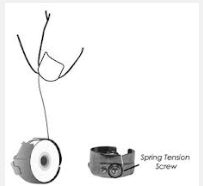
You should never need to turn this screw more than a half turn in either direction. If you do, this spring has probably been sprung and I would highly recommend you replace the bobbin case. You can replace this spring if you want but it is a pain in the rear end and unless you have very young eyes, steady hands and a lot of patience you will go bonkers.
Many times you will find a ball of lint will gather under the spring. You can clear this by gently running a business card between the spring and the bobbin case. However, resist the urge to push up on the spring. Once this spring is even slightly deformed it is useless and cannot be saved. Also, never use a needle or other metal object to try and clear a lint ball. A scratch on your bobbin case can be very problematic.
I have been working in commercial embroidery for almost 30 years and I have never seen an instance where a broken needle could be attributed to digitizing. It could be argued that a design can be SO DENSE it would cause a needle to break. OK, I guess but one time I accidentally turned an embroidery head on with a phone book under the needle case. The machine dropped the needle one time (jammed the machine) and penetrated more than 400 pages in the phone book without breaking the needle. I promise you will never get a design that is more dense than 400 sheets of yellow pages!
But seriously…Broken needles are caused by a mechanical failure 99.99% of the time. Usually this will be found in:
- Improperly installed throat plates
- If you have to change throat plates when converting a machine from flats to hats be sure you tighten the throat plates. If this plate is loose it can move so the needle hole is not directly under the needle and will cause needle breaks.
- Hook out of timing
- Hook timing almost always has to be adjusted if you ever directly hit a hoop (or any other solid object) with a needle.
- Needle Depth incorrect
- Verify needle bar depth is set to manufacturer recommendations.
- Needle bar depth almost always has to be adjusted if you ever directly hit a hoop (or any other solid object) with a needle.
- Needle installed incorrectly
- Make sure needle is fully seated in needle bar and properly installed. Typically the scarf (see image below) of the needle must face the rear.
- Design is too large for chosen hoop.
- A needle can deflect and break without actually hitting the hoop)
- Poorly framed product
- If material is hooped too loose the material can “flag” and cause a needle to deflect and break
The preceding issues are the most common non-digitizing related embroidery failures. There are others but if you pay close attention to these three area alone you can dramatically reduce the amount of product and equipment failure you experience in your facility.
If anyone out there has any questions or topics you would like me to address I hope you will reach out to me at steve.freeman@qdigitizing.com or reply to me here.
Steve Freeman
Managing Partner
www.qdigitizing.com
877-733-4390
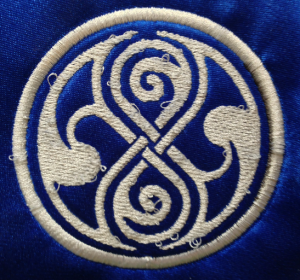

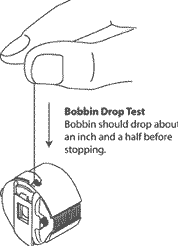
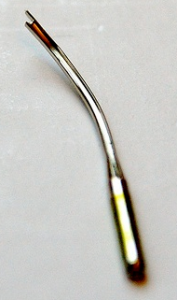
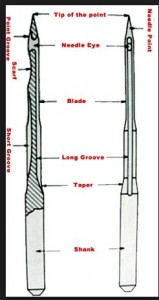
Very insightful. Thanks Steve! I passed the link to this along to the other EmbroidMes.